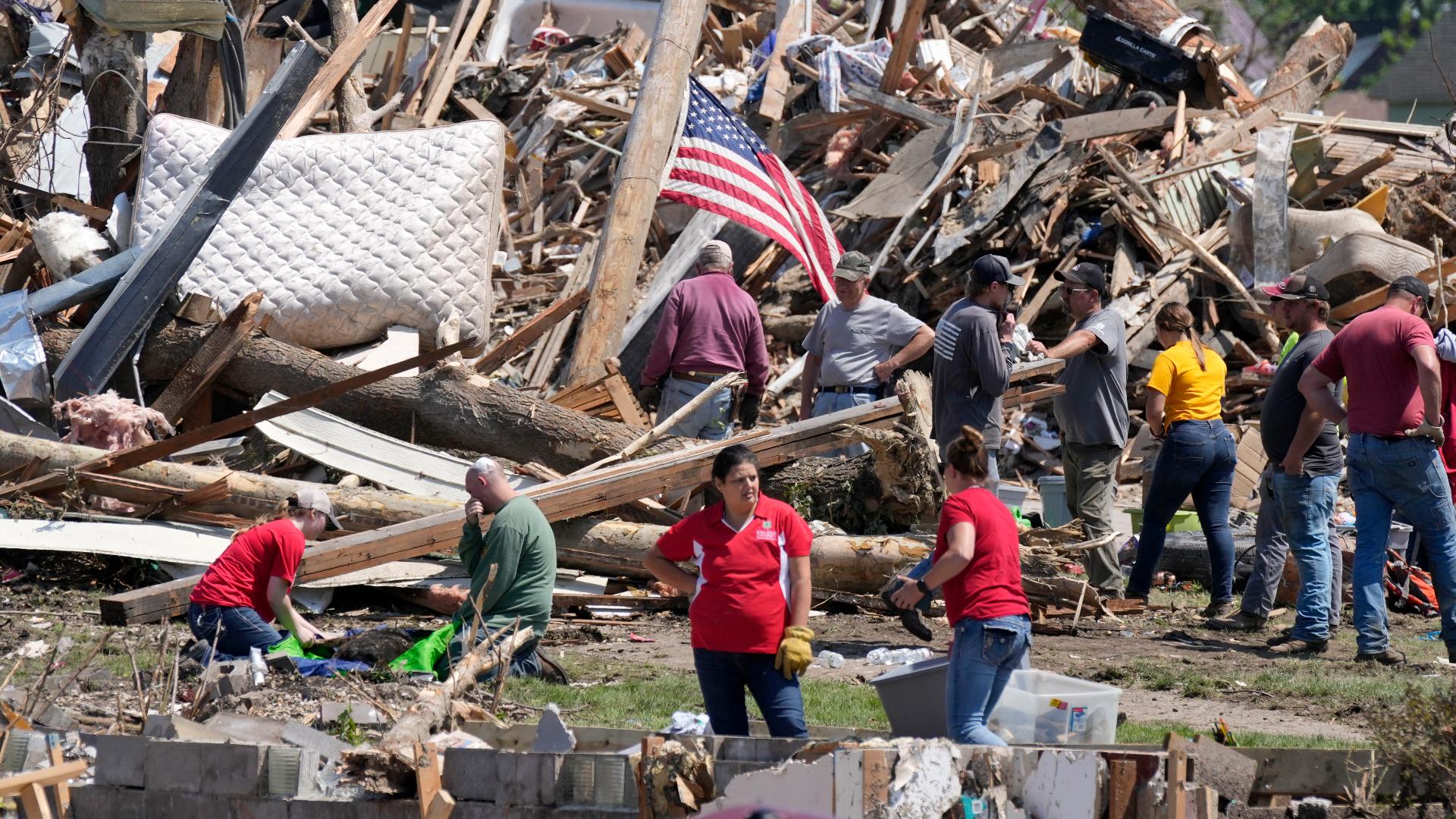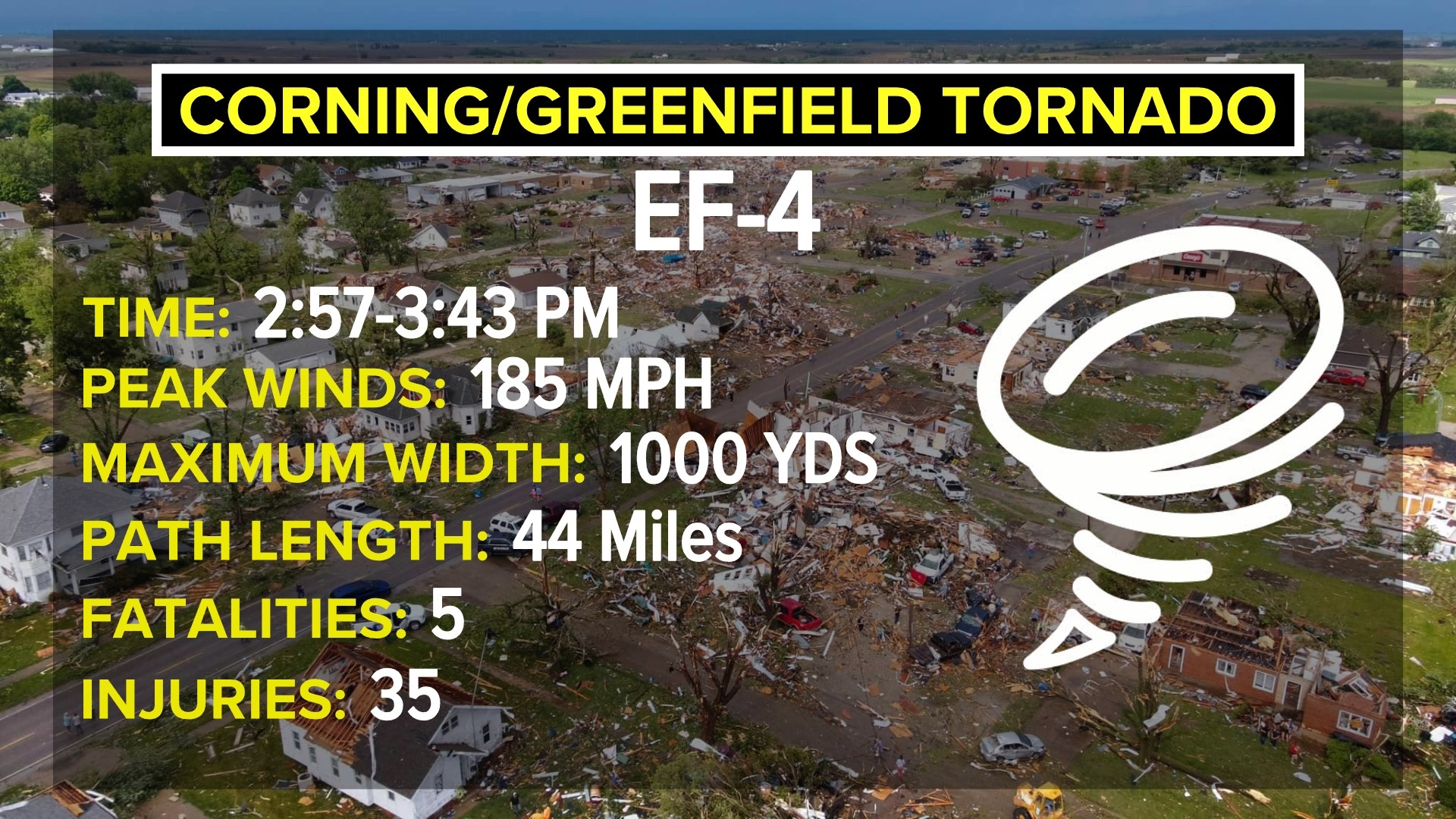Tornado Rating Systems

Greenfield tornado rating – The Enhanced Fujita Scale (EF Scale) is a system for rating the intensity of tornadoes based on the damage they cause. It was developed in the United States in 2007 and replaced the original Fujita Scale (F-Scale), which was introduced in 1971.
The EF Scale uses a scale of 0 to 5, with 5 being the most intense. The scale is based on the following factors:
- Wind speed
- Damage patterns
- Construction types
The EF Scale is a more accurate and reliable way to rate tornadoes than the F-Scale because it takes into account a wider range of factors. The EF Scale also uses more detailed damage criteria, which makes it possible to assign more accurate ratings to tornadoes.
Comparison to Other Tornado Rating Systems, Greenfield tornado rating
The EF Scale is the most widely used tornado rating system in the world. However, there are other tornado rating systems in use, such as the F-Scale and the TORRO Scale.
The F-Scale is the predecessor to the EF Scale. It was developed in the United States in 1971 and was used to rate tornadoes until 2007. The F-Scale is a less accurate and reliable way to rate tornadoes than the EF Scale because it does not take into account as many factors.
The TORRO Scale is a tornado rating system that was developed in Australia in 1979. The TORRO Scale is similar to the EF Scale, but it uses a different set of damage criteria. The TORRO Scale is not as widely used as the EF Scale.
Greenfield Tornado: Greenfield Tornado Rating

A Greenfield tornado is a tornado that forms over undeveloped or sparsely populated areas, often with little or no warning. These tornadoes are particularly dangerous because they can cause significant damage and injuries before they are detected.
Greenfield tornadoes are often difficult to study because they occur in remote locations and there are few eyewitnesses. However, there have been a number of notable Greenfield tornadoes that have occurred in the past.
Notable Greenfield Tornadoes
- The Tri-State Tornado of 1925 was a Greenfield tornado that traveled for 219 miles (352 km) across Missouri, Illinois, and Indiana. It was the longest-tracked tornado in American history and killed 695 people.
- The Woodward Tornado of 1947 was a Greenfield tornado that struck the town of Woodward, Oklahoma. It killed 107 people and destroyed 95% of the town.
- The Moore Tornado of 2013 was a Greenfield tornado that struck the city of Moore, Oklahoma. It killed 24 people and destroyed thousands of homes.
Challenges and Limitations of Studying Greenfield Tornadoes
There are a number of challenges and limitations to studying Greenfield tornadoes. One challenge is that they occur in remote locations, which makes it difficult to get to them in time to study them. Another challenge is that there are often few eyewitnesses to Greenfield tornadoes, which makes it difficult to get accurate information about them.
Despite these challenges, scientists are learning more about Greenfield tornadoes all the time. By studying these tornadoes, scientists can better understand how they form and how to predict them. This information can help to save lives and property.
Tornado Safety and Mitigation

Understanding tornado ratings is crucial for public safety, as they provide valuable information about the potential severity and destructive power of an approaching tornado. By knowing the rating of a tornado, individuals can make informed decisions about seeking shelter and taking appropriate precautions to minimize risks.
Preparing for and staying safe during a tornado event requires a comprehensive approach that includes:
- Developing a family tornado safety plan that Artikels roles and responsibilities, evacuation routes, and designated safe zones.
- Identifying a sturdy building or underground shelter as a safe haven during a tornado warning.
- Staying informed about weather forecasts and warnings, and having multiple ways to receive alerts, such as weather radios, mobile apps, and local news channels.
Tornado Warning Systems
Tornado warning systems play a vital role in providing timely alerts to communities in the path of a tornado. These systems utilize a network of weather radar stations, spotter networks, and automated algorithms to detect and track tornadoes, issuing warnings to affected areas.
The effectiveness of tornado warning systems depends on the accuracy and timeliness of the warnings, as well as the public’s understanding of the importance of taking immediate action when a warning is issued.
Tornado Shelters
Tornado shelters are specially designed structures that provide protection from the damaging winds and debris associated with tornadoes. They can be located above or below ground and are typically constructed to withstand high winds and impact forces.
Using a tornado shelter during a tornado event can significantly reduce the risk of injury or death. It is important to identify the nearest designated tornado shelter in your community and have a plan for reaching it quickly when necessary.